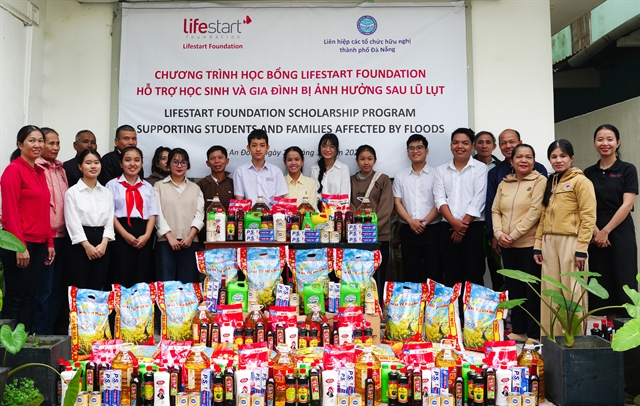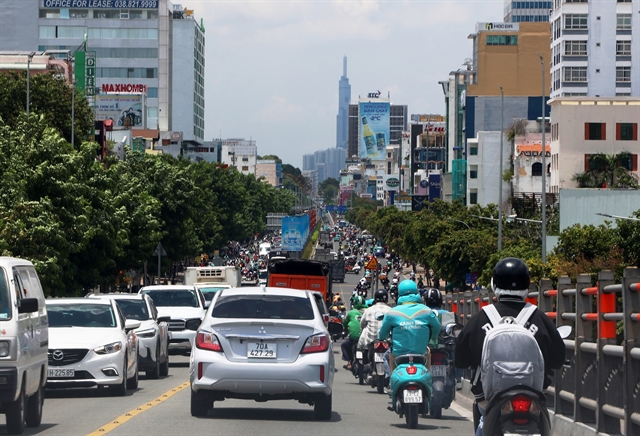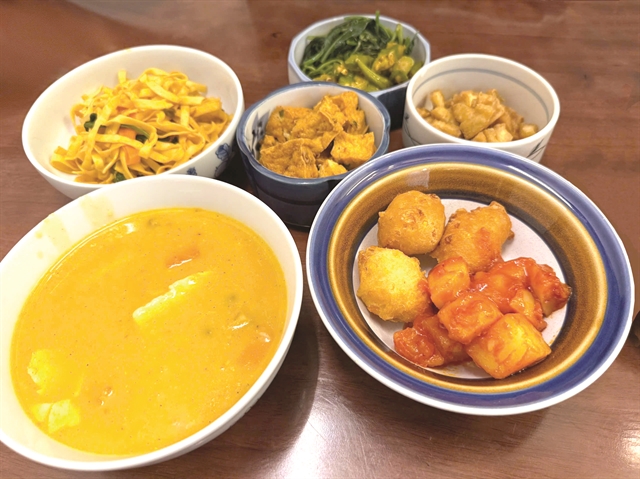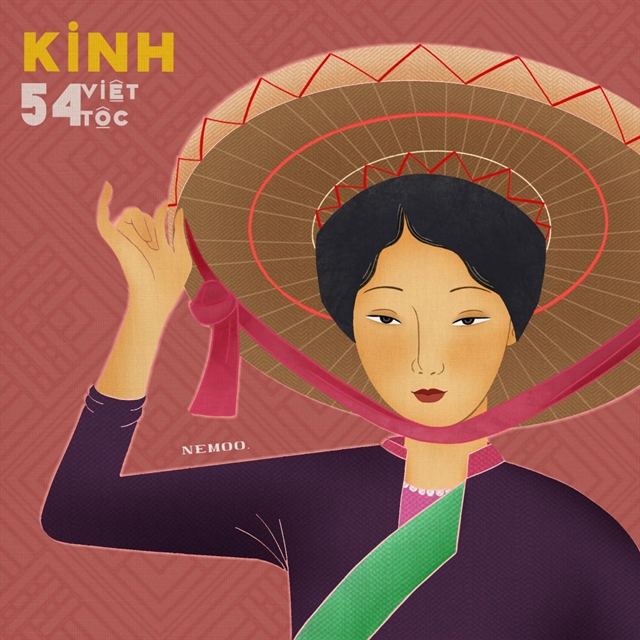 Society
Society

A 27-year-old French man has moved to Việt Nam to look for his biological parents who left him at an orphanage in HCM City when he was 10 months old. Bồ Xuân Hiệp reports.
 |
| Auréline Malnoury (second from left), at a meeting organised by Tuổi Trẻ newspaper, with other adoptees who are looking for their biological parents. — VNS Photo Bồ Xuân Hiệp |
Bồ Xuân Hiệp
For many years, Auréline Malnoury has never stopped thinking about his Vietnamese roots and his biological parents.
Malnoury (whose Vietnamese name is Phan Văn Giang) was only 10 months old when he was adopted by a French family at the Gò Vấp Child Welfare and Protection Centre in HCM City’s Gò Vấp District.
Three years ago, he finally had a chance to visit what he calls his “homeland” while on vacation with his adoptive French mother.
On his first trip to the country, he was particularly impressed with the scenery and people. But more importantly, the visit intensified his passion to find his birth parents.
During the trip, his adoptive mother told him that she should have taken him back to Việt Nam sooner.
In July, he returned for a second time after realising that he had “fallen in love” with the country.
At the time, he visited the Gò Vấp Child Welfare and Protection Centre where he had been adopted nearly 27 years ago.
In a recent interview, he said he had been lucky to have been raised by a kind family from France, but “from the bottom of my heart, I’ve always wanted to know about my birth parents”.
The turning point of his life, he said, was when he decided to move to Việt Nam and search for his birth parents.
Malnoury’s journey to trace his roots was inspired by adoptee Amandine Durand, 23, who found her birth mother in Việt Nam recently.
Durand was able to locate her biological family in the coastal southern province of Bà Rịa-Vũng Tàu after her story was published in Tuổi Trẻ (Youth) newspaper under a programme organised by the newspaper that helps Vietnamese adoptees trace their roots.
Soon after Amandine’s adoption story was published in July, many people contacted the newspaper saying they knew about her birth parents, whom she later met.
Under the Tuổi Trẻ newspaper programme, the stories of Vietnamese adoptees are published so that readers can spread the news and help them trace their birth parents.
Other Vietnamese adoptees from around the world are encouraged to take part in the programme and look for their birth parents.
New life
While he searches for his biological parents, Malnoury is working as a tennis coach and spending his free time studying Vietnamese. He also regularly visits the Gò Vấp centre to give a helping hand to the children.
“I want to be a sport coach. More importantly, I want to be a life coach for the children there,” he said. “Many other orphans were not lucky like me. I’m happy doing anything for the children.”
Malnoury has travelled to about 30 countries, but is happy with his life now in Việt Nam.
“Among the countries I have travelled to, I feel most close to Việt Nam as this is the place where I was born. I want to help other unlucky children at the Gò Vấp centre,” he said. “I want to share my luck with other children by working as a social worker for the centre when I learn enough Vietnamese.”
“I’m also learning the language so I’ll be able to speak with my birth parents when I find them,” he added.
Mai Thanh Thuỷ, manager of the Gò Vấp Child Welfare and Protection Centre, who has been working at the centre for 15 years, said the centre was willing to help adoptees find their biological parents.
The orphanage provides information about parents, including household addresses of many years ago, and works with local authorities to trace any information related to the birth parents.
As many as 350 orphans, including children with disabilities, are taken care of in different departments at the centre, depending on their age and health conditions.
While the children are sent to the centre for a number of reasons, they all share one thing in common: they have no parents or relatives. Many of them have been disabled, some with paralysis or cerebral palsy, since birth.
“The children always open their big eyes at people who visit them,” she said. “They smile cheerfully and tend to hold the hands of visitors tight for fear that they will lose them.”
Every day, the centre’s staff help the children with personal hygiene and dining, and at the same time, train them how to take care of themselves (changing clothes, eating and other daily activities). They also teach them how to better integrate into the community.
“The way the children express their emotions may not be the same as others, but what they really want is to receive help and care, especially warmth from people,” she said.
Kids Without Borders
Sơn Michael Phạm, a Vietnamese-American and founder of Kids Without Borders, an organisation which helps Vietnamese adoptees around the world trace their roots, said he was happy to work with Tuổi Trẻ newspaper in the campaign to help reunite Vietnamese adoptees with their biological parents.
Kids Without Borders, which works with children in more than 30 countries, attracts volunteers worldwide, providing opportunities for youth and changing thousands of lives around the world.
In 1999, Sơn left Việt Nam as a refugee after the war ended, and made three annual trips to Việt Nam to support local orphanages and foster homes.
His family started their lives in the US with nothing except the generosity and care of the community and their church in Chicago.
As a volunteer, Sơn served others in the refugee camp, and later worked his way up to become a successful businessperson in the US.
Kids Without Borders was initially formed as a school service project for students to sort clothes and other donated items for children in the community. Besides its main work of helping adoptees find their birth parents, it continues to donate items to children in need around the world.
Sơn continues to inspire and encourage children to give of themselves through service to others in their communities.
He believes strongly that by involving “children in helping other children”, they will recognise that they share more similarities than differences. — VNS




